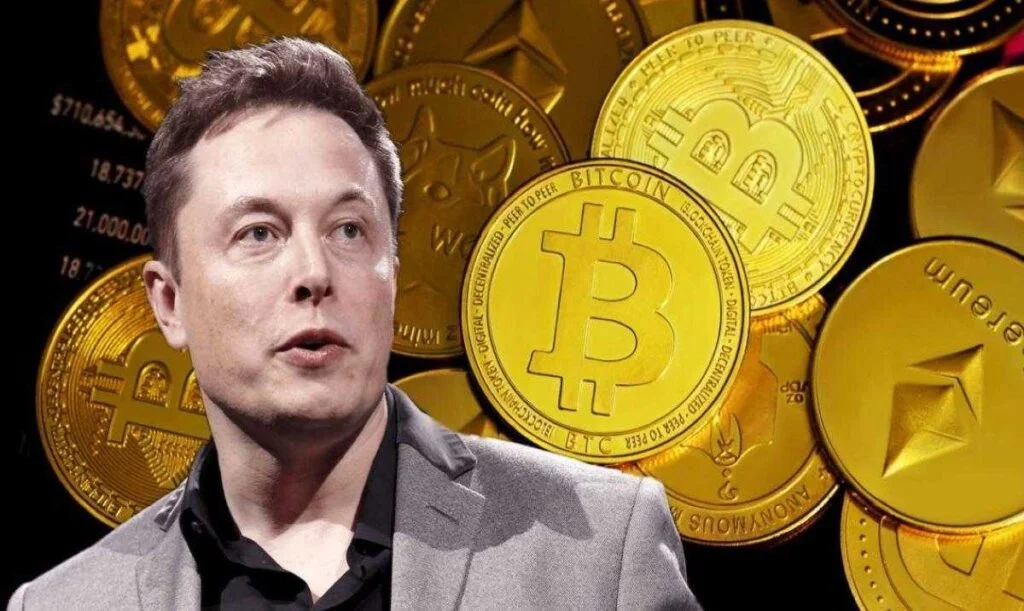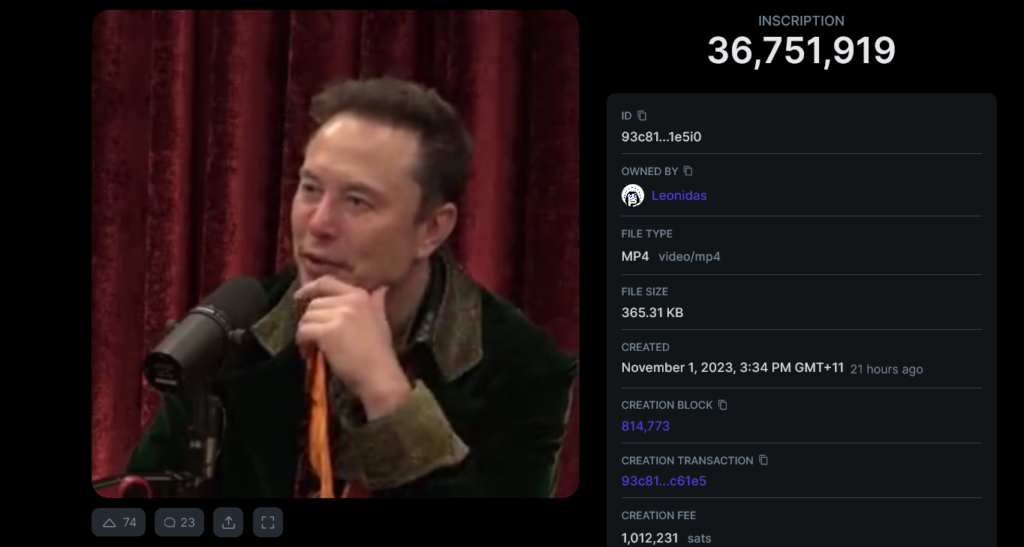Elon Musk argued that NFT initiatives “should at least encode the JPEG in the blockchain,” much to the delight of Bitcoin enthusiasts.

During a podcast where he mocked non-fungible tokens (NFTs), Tesla CEO and billionaire Elon Musk may have inadvertently bolstered the case for Bitcoin Ordinals, also known as Bitcoin NFTs.
“The funny thing is that the NFT is not even on the blockchain — it’s just a URL to the JPEG,” Musk said in an interview with The Joe Rogan Experience published on October 31.
Musk stated that NFT initiatives should encode JPEG on-chain at minimum:
“You should at least encode the JPEG in the blockchain. If the company housing the image goes out of business, you don’t have the image anymore.”
Bitcoiners argued on social media that Musk’s remarks encapsulated the use case for Bitcoin Ordinals. Bitcoin’s version of NFTs was launched in January by developer Casey Rodarmor, which was made possible by the Taproot soft fork in November 2021.
Will Clemente, a cryptocurrency analyst, was among those who praised Musk’s remarks, observing that 38 million Ordinals inscriptions will exist forever on Bitcoin’s blockchain.
.@elonmusk you just laid out the case for Bitcoin ordinals – image/text inscriptions directly on the most secure open source monetary network on the planet. There are currently 38 million of these inscriptions on the Bitcoin blockchain. pic.twitter.com/WASj1qpkz8
— Will Clemente (@WClementeIII) November 1, 2023“This is why Ordinals will continue to grow,” Rohun stated. The creator of the NFT initiatives DeGods and y00ts is “Frank” Vora. It is the most sophisticated response to one of the most widespread criticisms of NFTs.
Ordinals developer known as “Leonidas” was so impressed with Musk’s remarks that he encoded the 19-second video into Bitcoin’s blockchain at block 814,773:

Musk’s criticisms regarding NFTs are not novel. In December 2021, he used a meme depicting a patient on a therapist’s couch to ridicule NFTs as a symptom of mental illness.
— Elon Musk (@elonmusk) December 16, 2021
However, Musk’s comments do not apply to all NFT initiatives on Ethereum.
For instance, Larva Labs transferred its Cryptopunks NFTs on-chain in August 2021, four years after they had existed off-chain.
“Storing them on-chain in this way would further cement the long-term survival of the Cryptopunks images and attributes, and ensure that they can be fully accessed by anyone with only an Ethereum client,” Larva Labs in the statement.
.@elonmusk is correct that having NFT merely provide an http link to someone's domain is silly.
However, with rare exceptions, it's also silly to insist NFT content be on chain,
IPFS links, with the content backed by whoever owns the NFT is the natural solution.
— Arthur B. 🌮 (@ArthurB) November 1, 2023Are NFT markets in a death spiral or poised for a comeback?
The developers of the Ethereum-native OnChainMonkeys, Metagood, announced in September that they would migrate their NFTs to Bitcoin.
While the company’s CEO, Danny Yang, did not explicitly address the JPEG dilemma, he did explain that NFTs “will win on Bitcoin” due to its more secure network:
“The Bitcoin Ordinal protocol is better designed for decentralization and security than the Ethereum NFT protocol. High-value NFTs will win on Bitcoin.”
Nevertheless, Ethereum continues to host 84% of all NFT trading volumes, according to CoinGecko, citing June data. Bitcoin and ImmutableX ranked second and third, respectively, with 11% and 2.5% market share.
